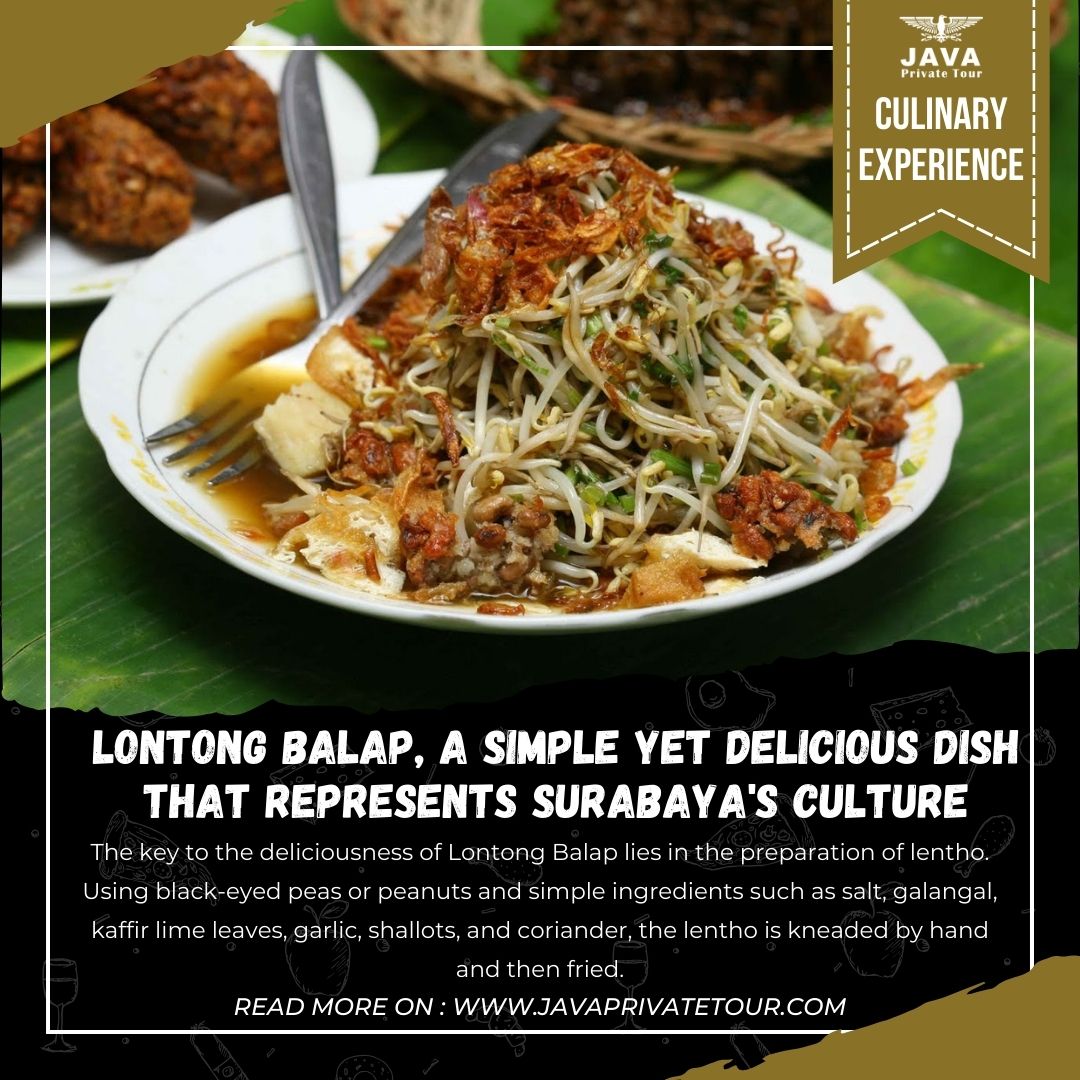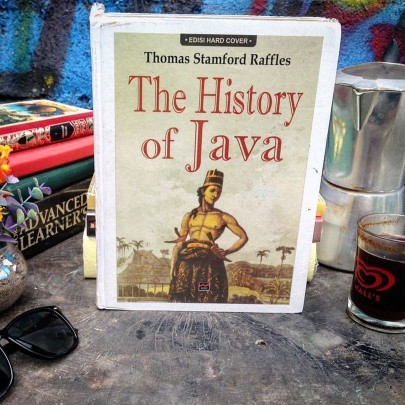javaprivatetour.com – If there’s one place where people can feel a sense of camaraderie, liveliness, and brotherhood, it might be Surabaya. Unlike the cultures of Yogyakarta and Solo, the city of Surabaya is known for its straightforward, assertive, and also witty culture. That’s why the motto “the customer is always right” doesn’t apply in the City of Heroes.
The Origin of the Popular Lontong in Java
The story behind the name Lontong Balap traces back to the cylindrical container resembling a water jug carried by its vendors. To catch the attention of potential buyers, sellers began running, creating the illusion of a race—hence the term “balap” or race.
Regarding the use of lontong in this appetizing breakfast dish, various historical sources suggest its deep-rooted connection to Indonesian culture. Some attribute the popularity of lontong and ketupat to the teachings of Sunan Kalijaga, where the substitution of banana leaves for coconut leaves simplified the wrapping process.
Others claim that lontong’s creation is a fusion of Betawi and Chinese cultures, giving rise to dishes like Lontong Cap Go Meh during the Chinese New Year. Regardless, the distinct texture of lontong, dense yet slightly chewy, adds a unique touch to this dish.
Lontong Balap and the Principle of Simplicity
In harmony with Surabaya’s simplicity and agility, Lontong Balap holds no other meaning than being lontong balap sold in containers resembling jugs, carried by vendors rushing to avoid losing customers. This activity became synonymous with the dish, birthing the name Lontong Balap, reflecting Surabaya’s straightforward and unambiguous approach to naming their delectable breakfast.
A distinctive feature of Lontong Balap is “lentho,” made from peanuts soaked in various spices overnight, pounded by hand, and deep-fried. To enhance the flavor, patrons can add sweet soy sauce and petis (shrimp paste). Even though Lontong Balap is now often sold in more modern settings, the name “lontong balap” remains unchanged.
Lontong Balap Components and Surabaya’s Familiar Atmosphere
As part of the Culinary Culture Series: Surabaya Feast, Abdul Latif Bustami, an anthropologist at the State University of Malang, explains that the lively atmosphere of Surabaya’s eateries is rooted in its history as a trading city. Tolerance and equality shaped the egalitarian nature of its people, fostering a sense of camaraderie evident in the banter exchanged between vendors and customers.
When visiting a Lontong Balap stall, you might hear banter and friendly exchanges among patrons and sellers, creating a warm and equal atmosphere. This camaraderie is a testament to Surabaya’s egalitarian values, where everyone feels free to exchange friendly jests while enjoying their meals.
The Irresistible Blend of Peanut Sauce and Lentho
The peanut sauce used in Lontong Balap typically comprises peanuts, shrimp paste, garlic, red chili, brown sugar, and water. This blend is finely ground to create a delicious peanut sauce, serving as the key element in the delectable presentation of Lontong Balap.
Proper presentation is crucial for a delightful Lontong Balap. The chopped lontong, bean sprouts, and lentho should be placed on a plate and drizzled with peanut sauce. Sliced boiled eggs, shrimp crackers, and sambal kecap (a spicy soy sauce) can be added for additional flavor. Before serving, it’s advisable to mix the Lontong Balap with peanut sauce thoroughly for a well-infused experience.
The Secret to Lontong Balap’s Delight: Lentho Mastery
The key to the deliciousness of Lontong Balap lies in the preparation of lentho. Using black-eyed peas or peanuts and simple ingredients such as salt, galangal, kaffir lime leaves, garlic, shallots, and coriander, the lentho is kneaded by hand and then fried. Unlike Lontong Sayur or Lontong Cap Gomeh, Lontong Balap boasts a diverse and unique filling, offering a distinct taste.
As it doesn’t use coconut milk, Lontong Balap’s broth remains refreshing and avoids overwhelming richness, even when consumed in abundance. The addition of bean sprouts complements the lontong and crispy lentho, enhancing the overall experience. Despite its simple appearance, Lontong Balap’s taste competes favorably with other lontong variations. Served alongside Lontong Balap is often a side of “sate kerang” (cockle satay).
Enjoying Lontong Balap
Lontong balap is a popular breakfast dish in Surabaya. It is also a popular snack or light meal. Lontong balap is best enjoyed fresh, so it is a good idea to find a stall that sells it made to order.
When you order lontong balap, you will usually be asked how much lentho you would like. You can choose from a small, medium, or large amount. You can also choose whether or not you want to add the other ingredients, such as eggs, shrimp crackers, and kecap sambal.
Lontong balap is a delicious and affordable dish that is a great way to experience the culture of Surabaya. Whether you’re a foreign tourist exploring Java for leisure, travel, business, research, journalistic endeavors, or content creation for platforms like YouTube, a delightful culinary adventure awaits with Java Private Tour. With English-speaking guides, flexibility, certified local guides, and a range of private vehicles, Java Private Tour ensures an enriching and personalized experience for every traveler. Trusted by embassies and recommended by satisfied patrons from friendly nations, Java Private Tour is your gateway to discovering the heart and soul of Java’s culinary treasures. You can simply BOOK HERE.

















